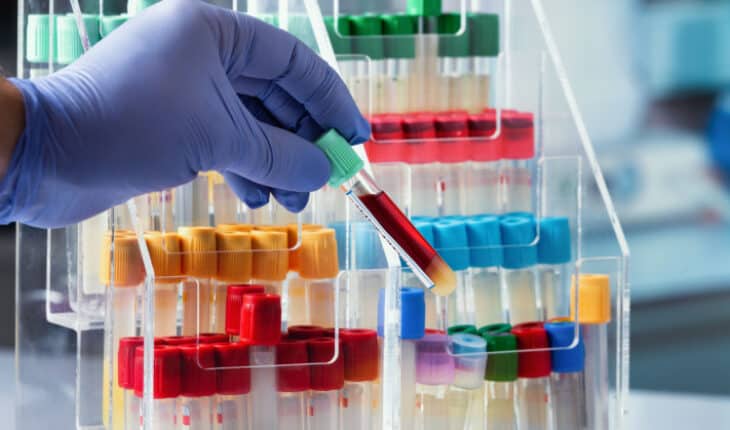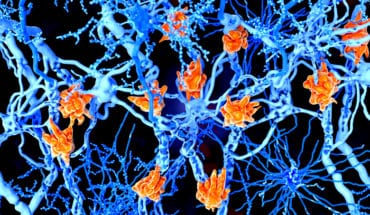An Australian first biobank will be established to improve and discover new treatments for children with genetic muscle diseases such as muscular dystrophy.
The National Muscle Disease Bio-databank, co-led by Murdoch Children’s Research Institute, Monash University and Alfred Health, will advance research into understanding why children develop genetic muscle diseases. The project forms part of a $2.5 million Medical Research Future Fund grant awarded to the team for research into congenital muscle diseases.
These diseases, spanning dystrophies and myopathies, are characterised by severe muscle weakness, usually from infancy, that can impact swallowing, breathing and lead to eye problems and learning difficulties. About 30 people a year are diagnosed with a congenital muscular disease in Australia of which half will have a genetic basis identified.
Murdoch Children’s Dr Peter Houweling said there was an unmet need for affordable treatments that could be fast-tracked into clinical trials.
“Knowledge is limited because Australia lacks a dedicated databank for congenital muscle disorders,” he said. Each state undertakes genetic testing via local services but there is no national database that matches clinical information with genetic diagnosis.”
To address this, the biobanking facility housed at Murdoch Children’s will collect patient information and store blood test and skin biopsy samples from children across Australia with genetic muscle disease.
“To understand how muscle is affected by disease, our research team will study the genes, cells and proteins in patient samples using cutting edge technologies,” he said. This bio-databank will advance our knowledge of disease mechanisms and has the real potential to discover new and better treatments and fast-track discoveries.”
Monash University’s Professor Peter Currie said genetic muscle disorders have one of the highest disease burdens, greater than that of cancer and multiple sclerosis and greater per case than any other disease.
“The financial cost per year for genetic therapies and loss of productivity for those with muscular dystrophy is $435 million due to a lack of effective treatments,” he said. For decades, treatments have remained unaffordable for most families and is primarily palliative aimed at maintaining mobility, respiratory and cardiac functions.
“Congenital muscle diseases are also arguably the most individually impactful with many patients having a poor prognosis, requiring lifelong supportive care including mobility and respiratory support and in severe cases are inevitably fatal.”
Alfred Health’s Professor Catriona McLean said a major hurdle to advancing outcomes was understanding the underlying molecular basis of the diseases, coupled with a need for patient-specific models to develop and test therapies.
“Despite almost two decades of genomic diagnostics in the clinic, patients and families are still left with few answers and ineffective treatment options for disorders that can be fatal in infancy or early childhood,” she said.
“Much of this clinical uncertainty stems from a lack of insight into the disease, which requires innovative thinking and investment into additional programs that can advance beyond genomics.”
Bindushree Pathre’s daughter Ivani, 4, was diagnosed with congenital muscular dystrophy at four months of age.
“As a newborn she started to lose weight, couldn’t suck and was very lethargic,” she said. We were shattered when genetic testing confirmed the muscular dystrophy diagnosis. We have no idea how long her life expectancy will be so we have to take one day at a time and cherish every moment.”
Bindushree said with Ivani’s weak muscles and compromised immune system they avoided situations where Ivani could pick up respiratory infections.
“We are on high alert for anything that could make Ivani sick,” she said. We haven’t travelled back to India to see family since she was born because we don’t want to risk any health issues. She is immobile and will eventually need a wheelchair. She doesn’t have the strength to feed herself or even open the cap off a pen. But despite her challenges she tries her best to be independent.”
Bindushree said her daughter had weekly therapy sessions including physiotherapy, hydrotherapy and speech therapy and may require surgery when she’s older.
But she said the muscle disease biobank gave her hope that new treatments could be developed.
“Muscular dystrophy is poorly understood and there isn’t enough awareness,” she said. This biobank gives me hope for my daughter, and if not, hopefully for another family in the future. I wish one day that no other parent has to hear their child has muscular dystrophy and watch as their condition keeps getting worse as they age with no treatment available. It’s heartbreaking and no parent should have to endure that pain.”
A national, multidisciplinary network including paediatric neurologists, pathologists, scientists and patient advocacy groups have been assembled for the biobank project. Key collaborators include the Australian Neuromuscular Disease Registry, the Women’s and Children’s Hospital in Adelaide, Monash Health, the University of Melbourne, The Royal Children’s Hospital, Children’s Health Queensland, Sydney Children’s Hospitals Network, The Harry Perkins Institute in Western Australia, Muscular Dystrophy Australia and the Fred Liuzzi Foundation.
To contact the muscle disease biobank team visit nmdb.org.au/contact, email [email protected] or for more information visit the Monash Website.
- Early onset dementia more common than previously reported - 26th July 2024
- Children’s Exposome Linked to Serum Metabolite Changes - 24th July 2024
- Is Melatonin the wonder drug of anti-aging? - 22nd July 2024






